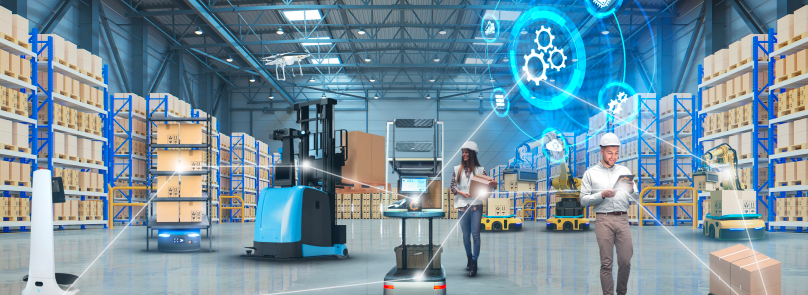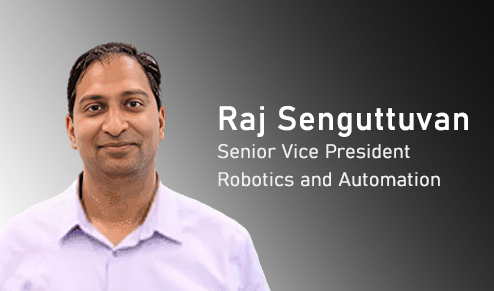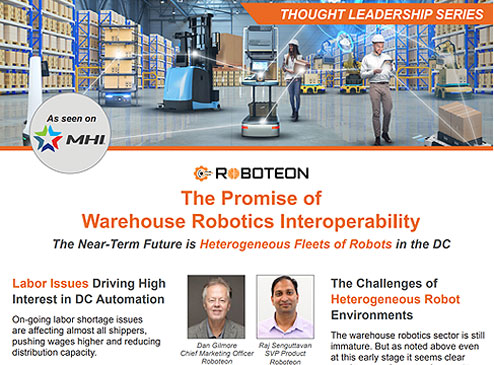Dwight Klappich on the Four Building Blocks of Multiagent Orchestration Platforms

We recently interviewed well-known former Gartner analyst Dwight Klappich, who retired from Gartner in June, for our Warehouse Automation podcast series.
The topic: Multiagent Orchestration Platforms, or MAOP.
What is MAOP? It’s a new category of logistics software as originally defined by Klappich, which is needed because “as companies expand their robotics usage, most will eventually have heterogeneous fleets of robots from different vendors performing various tasks, which will require standardized software that can easily integrate into a variety of agents and robot platforms.”
Gartner earlier defined MAOP like this:
“Multiagent orchestration platforms (MAOP) act like intelligent middleware that integrates and orchestrates work between various business applications, heterogeneous fleets of operational robots, and other automated agents like doors or elevators. These solutions orchestrate and assign work and monitor and coordinate the activities of diverse fleets of robots.”
During the podcast interview, Klapppich said there were four key building blocks or components of MAOP solutions, as follows: integration, orchestration, optimization, and observation.
Integration, Klappich said, “is just that ability to easily connect various different types of agents between business applications, robots, other types of agents. So that for the example of the truck unloading, somehow I need to get a message to the truck unloading robot to start unloading.”
The second building block, Klappich said, involves the fact is that “once I can integrate, I need to be able to orchestrate that work because the reason people are introducing robots and things like that is they want to get work done, right? The robots are there to support the execution needs within the warehouse or plant.”
He added that “what I'm doing one day could be very different the next day. That's one of the main reasons people are buying mobile robots instead of conventional automation. So the heart of the system is that orchestration piece, that ability to define those end-to-end work processes and how things need to connect, not technically connect, but from a process standpoint, connect between those steps in the process and be able to seamlessly execute that.”
The third component, optimization, comes “because you realize, well, if we can just execute the work, the next step is we want to do it the best way,” Klappich said.
He added: “We want to take those processes and understand all the work that might need to be done and start to apply much more robust decision support or simulation logic to those processes to say I'm not just doing them, but I'm doing them in the most efficient and productive way possible.”
Finally, on the fourth building block, “observe,” Klappich said that “if you look at most of the robot companies, they have their own software stack and most of them have some pretty decent analytics capabilities, but the problem is it's only for their robot platform.”
He added “what I am hearing is that companies want a single pane of glass where they can kind of look across all the activities in their warehouses and then start to apply analytics at that level.”
Good stuff from Klappich. There’s a lot more on the full podcast.
https://www.roboteon.com/podcasts
As a side note, Klappich is partnering with Roboteon in a strategic advisory role so that we can leverage all the insight.
FEATURED BLOG

Roboteon’s Raj Senguttuvan Quoted Extensively in Article on Orchestration of ASRS and AMRs
READ MORENEWS
Roboteon and Stellium announce Strategic Partner Partnership for Robotics and Automation Solutions for SAP EWM using Roboteon’s Multi-Agent Orchestration Platform
LEARN MOREMeet Roboteon at SAP Sapphire in Orlando
LEARN MOREWell-Known Former Gartner Analyst Dwight Klappich Joins Roboteon as Strategic Advisor
LEARN MOREResources

Thought Leadership Series: The Promise of Warehouse Robotics Interoperability
DOWNLOAD REPORT
Understanding Warehouse Robotics Software - White Paper
DOWNLOAD REPORT
Roboteon Solution Overview
Watch Video